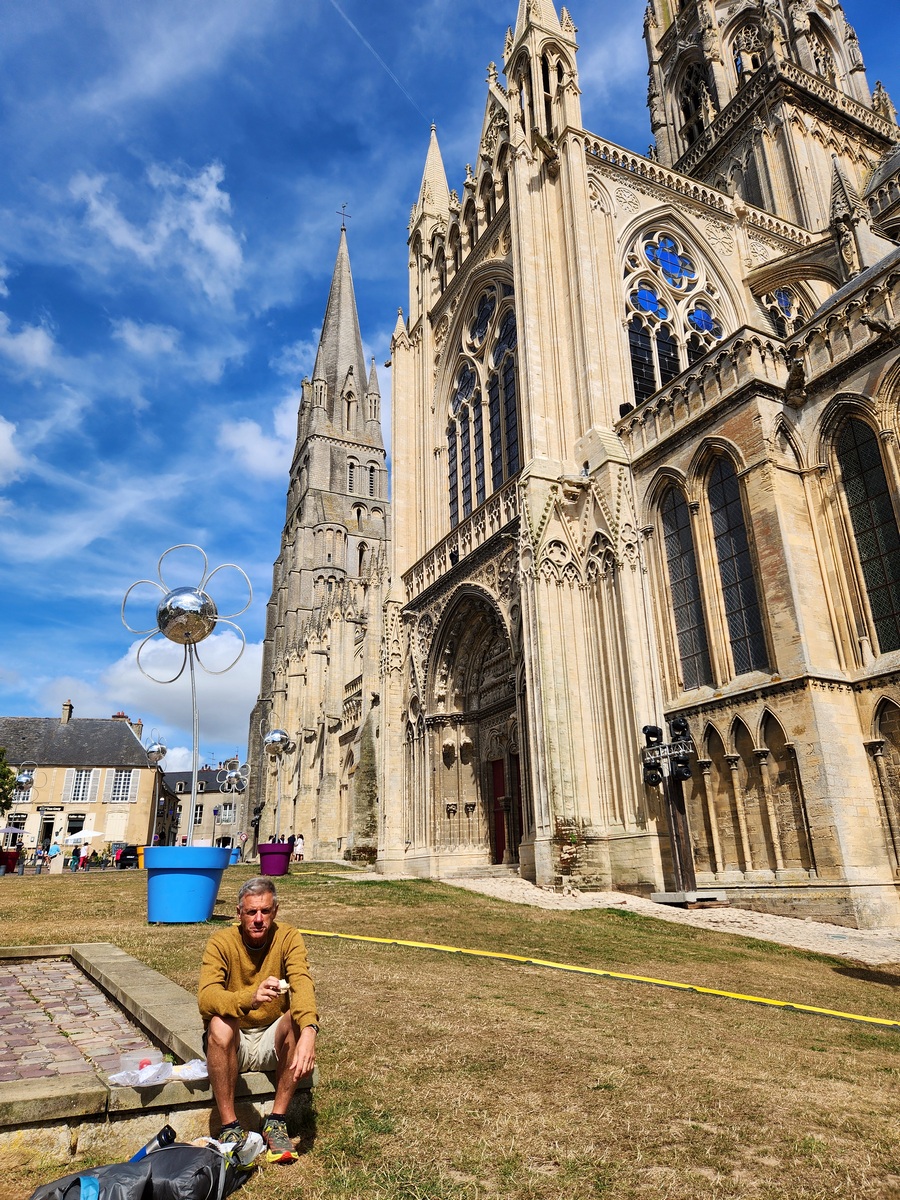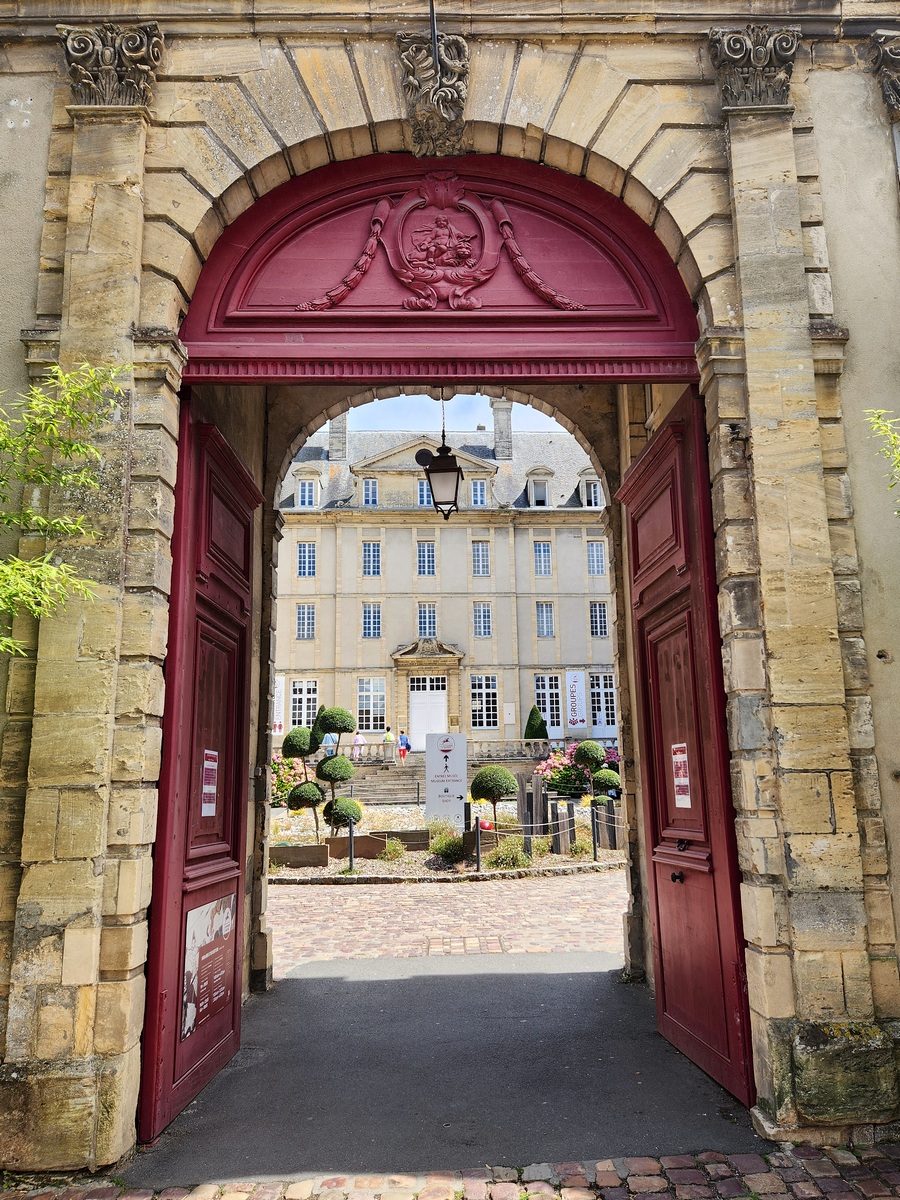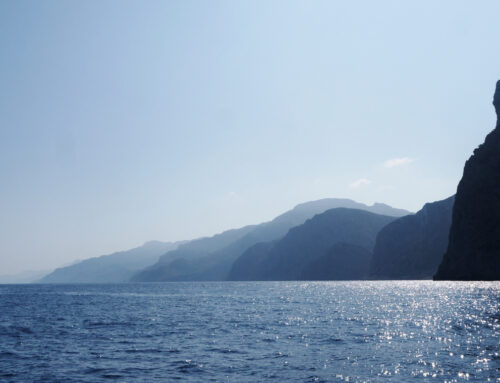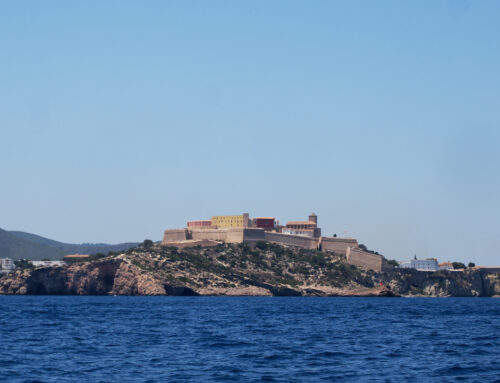Two invasions in one day
Off to Bayeux by train
By train Bayeux is an hour or so through low hilly countryside from Cherbourg. Here we intended to pay a visit to that very famous tapestry and the Museum of the Battle of Normandy. Aside from these museums, Bayeux itself is also famous for being a pretty medieval town, sustaining very little if any damage during the liberation in 1944, and still having that very quaint look in that very French kind-of-a-way. Having arrived at lunch time, however, we first sat on the grass outside their very grand medieval cathedral and scarfed down a lunch of pungent cheese and baguette (of course).

Lunch in front of the enormous cathedral in Bayeux.
The cathedral…yeah-nah
We were vaguely tempted to look inside the cathedral and to savour what was no doubt another breathtaking piece of religious architecture and decoration. But we were a bit churched out and tired of the dusty, claustrophobic and hypocritical atmosphere that those spaces ooze. So, we stayed outside and instead marvelled at how such an imposing and impressive 11th century edifice could have been given such tawdry 21st century baubles as part of its landscape gardening (see the photo). Then we wandered off to see the tapestry.
The Bayeux tapestry
I (David) can’t say that I am a great afficionado of textiles or needlework as a decorative art form. However, the images of the Bayeux tapestry have been a part of my understanding of European history for as long as I’ve had any concept whatsoever of European history. I had never delved into the tapestry in detail but I think that at some point on some bookshelf in our home there was a book about the tapestry or at least one that featured it in some detail. As a consequence, seeing the original was a bit like seeing an old, long-lost friend again. The work seemed so familiar but at the same time there were details that I hadn’t seen before, but which given their stylistic similarity just seemed like missing bits of a jigsaw puzzle, making me think ‘ah, of course that goes there’.

The entrance to the Bayeux Tapestry Museum. Taking photos of the tapestry itself was strictly prohibited.
They don’t make stuff like that anymore
The condition of the tapestry though was a wonderful surprise. One would think that a 1,000 year old bit of cloth might have got rather tatty and dirty and that its details and colours would have begun to fade into the grime and the wear of time. Indeed, I had always assumed that artistic representations of the tapestry had enhanced the details to improve their look and clarity, and that photographers had chosen to focus on the better parts of the panel, leaving the tired sections out. But, in the flesh, it is all still there, strong, detailed and vibrant. How on earth it has survived in such good condition is beyond me.
Invasion 1: The Normans in England
Of course one of the chief delights of the 70 metre tapestry is that it is such a great piece of story-telling: trust, cunning deceit, careful planning, and then sweet revenge and retribution. Seeing the story told in one steady telling was so good that we had to sneak back to the beginning and go through it all a very slow second time.
Invasion 2: The Allies in Normandy
Having just savoured a telling of a Norman invasion of England, we then scuttled off to see an exhibit of an invasion of Normandy from England, i.e. the battle for Normandy during the Second World War. While this particular exhibit had more of an amateur feel about it, I think it’s fair to say that an exhibit on modern warfare told through displays of weapons and equipment, photographs and maps, and mannequins dressed in various uniforms feels somewhat more immediate and differently impressive to a display of an invasion that occurred 1,000 years ago told through needlework. Especially combined with a visit to the nearby Bayeux war cemetery containing more than 4,500 burials from the Second World War. Very happy not to have been present at either event.






